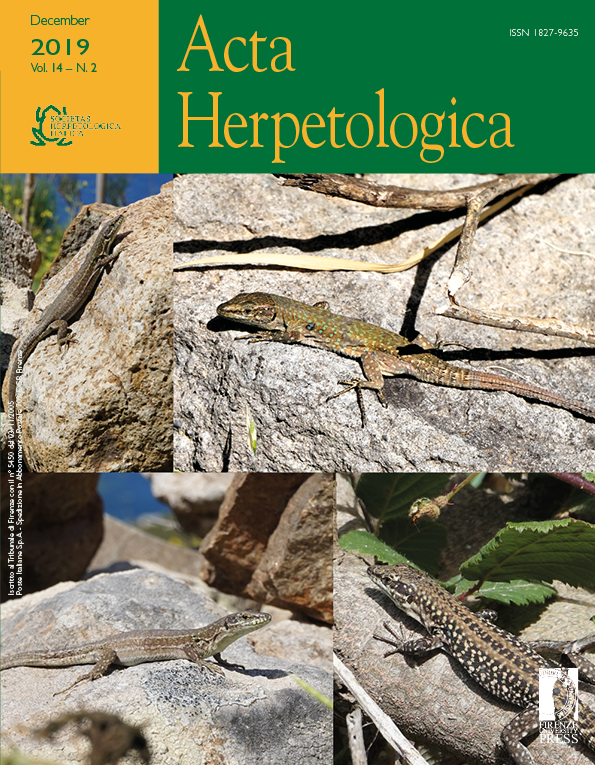Coping with aliens: how a native gecko manages to persist on Mediterranean islands despite the Black rat?
Published 2019-12-27
Keywords
- Behavioural shift,
- disturbance,
- ecological plasticity,
- evolutionary processes,
- predation
- rat eradication,
- Euleptes europea,
- Rattus rattus ...More
How to Cite
Abstract
How a native gecko manages to coexist with an alien rodent in the Mediterranean since thousands of years? What kind of eco-ethological adaptations or evolutionary adjustments enables this gecko to persist? The present study explores the interaction between the endemic European Leaf-toed gecko (Euleptes europaea) and the alien Black rat (Rattus rattus). In the last 30 years, we compared 26 populations inhabiting “rat” and “rat-free” islands and islets in Tunisia, Sardinia, Corsica and Southern France. Geckos’ populations can persist despite the occurrence of rats. In the presence of rats: 1) geckos’ average body size tends to decrease towards medium-sized individuals; 2) geckos shift their spatial behaviour avoiding to forage “in the open”; 3) geckos’ body condition is not affected by the presence of rats. Moreover, shortly after rats’ eradication, geckos’ population structure seems to change and larger sized geckos prevail while the spatial behaviour is much more conservative. The mechanisms driving the interactions between the two species still need to be explained. Rats could represent a stressor for geckos, compete for space, be pest vectors and even predators. Coexistence of natives and aliens requires adaptive plasticity and evolutionary adjustments. In contexts where the risk of reinvasion is high, eradication programs need to be carefully evaluated, since the arrival of “new rats” on an island could have much more damaging effects on the insular biota than those caused by the eradicated population.






